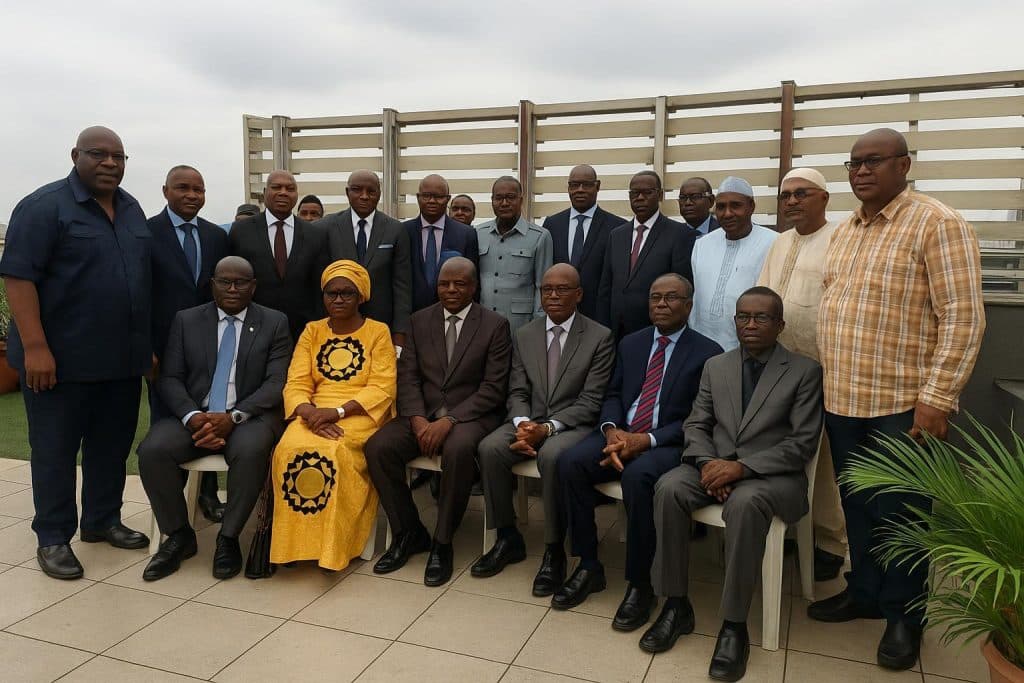Brazzaville au cœur des discussions régionales
On 23 October, the Economic Commission for Livestock, Meat and Fishery Resources (Cébévirha) opened in Brazzaville its 15th ordinary session of the Council of Direction, a decisive two-day meeting.
Delegates from Cameroon, Central African Republic, Gabon, Equatorial Guinea, Chad and Congo gathered to assess activities carried out in 2024 and 2025 and to anticipate the institution’s future milestones.
The agenda highlights the regional import-substitution strategy for local products, a flagship orientation adopted by Cémac heads of State, and the examination of Cébévirha’s 2026 operating budget.
Behind the closed doors of the conference room, participants seek to correct observed gaps and readjust the action plan so that upcoming programmes match both field realities and financial availability.
La vision d’import-substitution de la Cémac
The import-substitution vision, prescribed by the extraordinary Cémac summit of August 2021, aims to supply the community market with locally produced fish, rice, wheat, cassava and energy products, limiting costly external purchases.
For Cébévirha, specialised in livestock, fisheries and aquaculture, this mandate translates into boosting quantitative and qualitative production, reinforcing veterinary health and smoothing cross-border trade flows.
“Our institution has mobilised resources with partners despite scarcity,” reminded the Council president, Kaya-Tobi, welcoming collective efforts to turn political guidelines into concrete projects able to reach households.
By focusing on local value chains, officials hope to reinforce food security and reduce poverty, two pillars regularly reaffirmed within the sub-region’s development roadmap.
Un budget 2026 calibré pour l’action
Budgetary discussions occupy a central place, because the 2026 envelope must be “à la hauteur des ambitions”, as the working documents put it, and provide each department with predictable funding.
Members of the Council are expected to validate the annual work programme jointly with the financial package, ensuring coherence between objectives, timelines and resource mobilisation strategies.
Delegations share the view that a transparent, performance-oriented budget remains essential to secure the confidence of technical and financial partners whose support underpins several field operations.
A preliminary draft was circulated before the session, allowing capitals to send observations; the Brazzaville meeting now seeks final alignment ahead of formal adoption.
Des outils concrets pour accélérer le terrain
Beyond figures, the Council must endorse two complementary instruments: an operational plan detailing concrete interventions and a roadmap identifying priority actions to roll out the import-substitution strategy.
These tools will list responsibilities, expected outputs, deadlines and monitoring indicators, offering the region a common compass for the next three years.
According to the secretariat’s projections, early implementation could start several months after adoption, once national focal points have integrated the guidelines into their respective sectoral plans.
Regular reporting to ministers in charge of livestock and fisheries will guarantee follow-up, while sharing of best practices should accelerate replication among member states.
Des filières stratégiques au centre des priorités
The sectors targeted by Cébévirha weigh lourd in household consumption, representing a daily source of proteins and income, especially in rural areas where small farmers and fishers dominate production.
Improving sanitary conditions of herds and ponds remains a key lever; epizootic diseases or post-capture losses still erode yields and margins that could otherwise benefit domestic markets.
By harmonising regulations, Cébévirha also intends to facilitate intra-community exchanges, allowing surplus zones to supply deficit areas more fluidly and reducing informal trade corridors.
Stakeholders emphasise that the initiative complements national strategies rather than replacing them, a nuance designed to respect sovereignty while building collective strength.
Perspectives pour la sécurité alimentaire
In the Brazzaville corridors, optimism mingles with prudence: the region’s demographic growth and changing diets increase demand, but climate variability and limited infrastructure pose persistent challenges.
Cébévirha’s leaders nonetheless believe that shared planning and pooled resources can turn vulnerabilities into opportunities for regional youth employment and value-added processing.
The Council is due to deliver its final communique at the close of work, summarising decisions on the budget, operational plan and roadmap, before transmitting recommendations to the upcoming Cémac ministerial meetings.
Until then, delegates will refine figures line by line, aware that every allocation approved in Brazzaville will ripple across farms, rivers and markets throughout Central Africa.
Prochaines étapes institutionnelles
Experts note that recent cycles posted rates above eighty percent, a performance welcomed by donors and lending credibility to an adjustment for 2026.
In parallel, Cébévirha continues to court additional financing through regional development banks and multilateral programmes aligned with Cémac’s food and nutrition security objectives.
Potential synergies with climate funds are also under review, as sustainable aquaculture and resilient pasture management contribute to emission reductions and adaptation, reinforcing the green dimension of the agenda.
At country level, ministries responsible for agriculture and trade will need to adjust customs codes and quality standards in order to privilege regional sourcing without compromising consumer protection.
Civil society organisations, invited as observers, insist on governance that includes smallholders and women entrepreneurs represented in monitoring committees to anchor policies in everyday realities.

